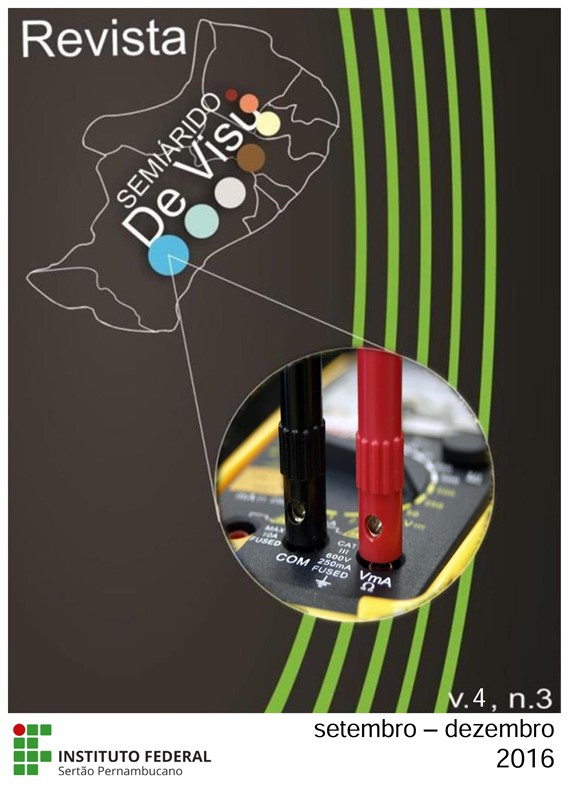Critical Literacies: analyzing the literacy practices in the Spanish Language of students in technical buildings
DOI:
https://doi.org/10.31416/rsdv.v4i3.147Keywords:
Assessment, Learning Foreign Language, Vestibular , Citizen TrainingAbstract
This study aimed to analyze the Spanish language issues of the Exame Nacional do Ensino Médio (ENEM),from the perspective of diagnosing which readings conceptions are involved in this examination. Therefore,systematized up and classified to the issues in the period 2010 to 2015, according to the concepts:language reading (reading of the lines), psycholinguistics (lines reading) and sociocultural (read behind the lines) - (CASSANY, 2006; ABREU, 2011). Thus,it was possible to trace the profile of the exam,and it was found that mostly sticks to psycholinguistics design. However,the examination showed unlike other vestibular shows the three conceptions of reading and this reveals the influence of guidance in understanding the teaching of languages in a civic education perspective. Thus,it is worth noting that this research it is guided in recent directions suggested by government documents: OCNEM (BRAZIL,2006), LDBEN (BRAZIL,1996) and Diretrizes Curricalares do Ensino Médio (2013), as well as the theoretical basis of the approach of literacy in their criticism/sociocultural aspects and reading concepts (BORDON,2006;KLEIMAN,2005;NERY 2003; SCARAMUCCI,2009;LUCKESI,1995).
References
ABREU, K.F. Concepções de leitura e de texto
subjacentes às provas de vestibular:
constatações e implicações para o ensino da
língua espanhola. Dissertação (Mestrado em
Linguística). Universidade Federal do Ceará.
Fortaleza, 2011.
______. Concepções de leitura no ensino de
espanhol como língua estrangeira: em busca de
uma abordagem sociocultural. In: BAPTISTA,
L.M.T.R.(Org.). Múltiplas Perspectivas,
Múltiplos Sentidos: o ensino e a aprendizagem
do espanhol em foco. 1ed.Brasília: Editora
Kiron, 2012, v. , p. 139-155.
ABREU, K. F; MORAIS, H. T. F; SILVA, M. R.
V. Eventos de letramento (s) em português e em
espanhol: a abordagem crítica na área de
edificações. In: Anais do I Colóquio de Análise
do Discurso (CNAD), 2014, Pau dos Ferros:
UERN: 2014.
ANDRIOLA, W.B. Doze motivos favoráveis à
adoção do Exame Nacional do Ensino Médio
(ENEM) pelas Instituições Federais de Ensino
Superior (IFES). Ensaio: aval. pol. públ. Educ.,
Rio de Janeiro, v. 19, n. 70, p. 107-126, jan./mar.
BENVENUTO, E. V. ; ABREU, K. F. .
Letramento(s): em busca do exercício da plena
cidadania. IN: VIII Congresso Norte e Nordeste
de Pesquisa e Inovação - Connepi, 2014, Salvador. Anais do VIII Connepi. Salvador:
IFBahia e IFBahiano, 2013.
BRASIL. Orientações Curriculares para o
Ensino Médio: Linguagens, Códigos e suas
Tecnologias. Brasília, Secretaria de Educação
Básica, 2006. Disponível em:
http://portal.mec.gov.br/seb/arquivos/pdf/book_
volume_01_internet.pdf . Acessado
em:02/02/2015.
CASSANY, D. Tras las líneas. Sobre la lectura
contemporánea. Barcelona: Editorial Anagrama,
CERVO, A.L. Metodologia científica. 6aed. São
Paulo: Pearson Prentice Hall, 2007.
KLEIMAN, Â. Preciso “ensinar” o
letramento? Não basta ensinar a ler e a
escrever? São Paulo: Produção Editorial, 2005.
LUCKESI, C. C. Avaliação da aprendizagem
Escolar. 10 ed. São Paulo: Cortez, 1995.
SCARAMUCCI, M.V.R. Avaliação da leitura
em inglês como língua estrangeira e validade de
constructo. In: Revista Calidoscópio. Vol.7, n.1,
p. 30-48, jan/abr 2009.
SILVA, M. R. V. ; ABREU, K. F. . Avaliação e
letramento(s): construindo pontes possíveis. In:
OLIVEIRA, F.K.; ABREU, K.F.. (Org.).
Métodos e pesquisas em educação.
ed.Brasília: Kiron, 2016, v. 1, p. 115-137.
TIBA, I. Ensinar aprendendo: Novos
paradigmas na educação. 18 ed. São Paulo:
Integrare Editora, 2006.















